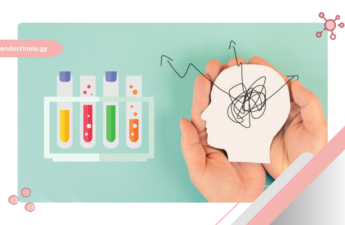D ვიტამინის როლი
D ვიტამინის კარგად ცნობილი და დამტკიცებული ფუნქცია ჩვენს ორგანიზმში არის ძვლოვანი ქსოვილის სიჯანსაღის უზრუნველყოფა.
ის ასევე მონაწილეობს ნაწლავებიდან კალციუმის და ფოსფორის შეწოვაში, რითიც უზრუნველყოფს სისხლში ამ ელემენტების ოპტიმალური კონცენტრაციების შენარჩუნებას, ძვლის ნორმალურ მინერალიზაციას და კალციუმის ნაკლებობის სხვადასხვა შედეგებისგან ორგანიზმის დაცვას.
D ვიტამინის ძირითადი წყარო
მეთოდი, რომლის დახმარებითაც ორგანიზმი თავის თავს უქმნის საჭირო D ვიტამინის ძირითად რაოდენობას, უნიკალურია: მისი გამომუშავება ხდება შიშველ კანზე მზის ულტრაიისფერი სხივების ზემოქმედების შედეგად.
Jeremy Scott Fitness on Apple Podcasts npp steroid dose Could one of these seven new fitness classes be your summer fling this year?ამ პროცესს ბევრი ხელის შემშლელი ფაქტორიც ახლავს თან. კერძოდ, D ვიტამინის სინთეზს აფერხებს:
- მუქი ფერის კანი
- ასაკის მატება
- მზისგან დამცავი კრემების გამოყენება
- ღრუბლები და ნისლი
ამას გარდა, D ვიტამინის გამომუშავება კრიტიკულადაა დამოკიდებული გეოგრაფიულ ადგილმდებარეობაზე, დღის მონაკვეთზე, წელიწადის დროზე, ასე მაგალითად, ზამთარში წარმოქმნა მინიმალურია ან შეიძლება სრულადაც შეწყდეს. ასევე საყურადღებოა, რომ მის სინთეზში მონაწილე ულტრაიისფერი სხივები არ ვრცელდება ფანჯრის გავლით.
სხვა ფაქტები D ვიტამინის სინთეზის შესახებ
- ვიტამინის სინთეზი მზის სხივების ზემოქმედების შედეგად მაქსიმალურია გაზაფხულზე, ზაფხულში და შემოდგომაზე დილის 10 საათიდან 15 საათამდე მონაკვეთში.
- მზის ისეთი ხანგრძლივობის ზემოქმედება კანზე, რომელიც იწვევს მსუბუქ შეწითლებას 24 საათის შემდეგ, წარმოქმნის დაახლოებით იმდენ D ვიტამინს, რაც მედიკამენტის 10000-დან 25000-მდე ერთეული დოზის ექვივალენტურია.
- მზით მიღებული D ვიტამინი ორჯერ დიდხანს რჩება ორგანიზმში, ვიდრე ნაწლავიდან შეწოვილი.
- მზის ხანგრძლივი დასხივება არ იწვევს ვიტამინის სიჭარბეს.
D ვიტამინის სხვა წყაროები
D ვიტამინის დამატებითი წყაროებია: საკვები, საკვების დანამატები, მედიკამენტები.
ბუნებრივად ამ ვიტამინს ძალიან ცოტა პროდუქტი შეიცავს. ყველაზე დიდი რაოდენობით ის გვხვდება ცხიმიან თევზში.
ბევრად ნაკლებია D ვიტამინი: საქონლის ღვიძლში, კვერცხის გულში, ყველში და სოკოში.
ზოგ ქვეყანაში D ვიტამინი შეიძლება ხელოვნურად იყოს დამატებული სხვადასხვა მზა პროდუქტში, როგორიცაა რძე, საუზმის მარცვლეული, წვენები, იოგურტი.
რადგან D ვიტამინი ცხიმში ხსნადი ნივთიერებაა, ის უკეთესად შეიწოვება, როცა მისი მიღება ხდება ცხიმის გარკვეული რაოდენობით შემცველ საკვებთან ერთად.
D ვიტამინის დღიური ნორმა
D ვიტამინის მიმართ ორგანიზმის დღიური მოთხოვნილების მთავარი განმსაზღვრელი ფაქტორია ასაკი. ვიტამინის რაოდენობა, რისი მიღებაც დღის განმავლობაში აუცილებელია ძვლების ჯანმრთელობის შესანარჩუნებლად, არის:
- დაბადებიდან 12 თვემდე: 400 IU
- 1-დან 70 წლამდე: 600 IU
- 71 წლიდან: 800 IU
- ორსულებში და მეძუძურებში: 600 IU
ვიღებთ თუ არა D ვიტამინს საკმარისი რაოდენობით, ამის შესამოწმებლად ერთადერთი გზაა მისი ე.წ. სამარაგო ფორმის – 25(OH)D-ის რაოდენობის განსაზღვრა სისხლში. შედეგების ინტერპრეტაცია კი შემდეგნაირია:
- 30 ნგ/მლ-ზე მეტი – საკმარისი რაოდენობაა
- 21-29 ნგ/მლ – აღნიშნავს D ვიტამინის უკმარისობას
- 20 ნგ/მლ-ზე ნაკლები – გამოხატავს D ვიტამინის დეფიციტს
- 12 ნგ/მლ-ზე ნაკლები – მძიმე დეფიციტია და შეუძლია სერიოზული ზიანი მიაყენოს ძვლის და ზოგად ჯანმრთელობას.
vitamin D deficiency
ბოლო ათწლეულების განმავლობაში ტექნოლოგიების განვითარებამ საგრძნობლად შეცვალა ჩვენი ცხოვრების წესი. თანამედროვე სამყაროში ადამიანი სულ უფრო ნაკლებ დროს ატარებს გარეთ, რის შედეგადაც ნაკლებია მზის სხივების კანთან კონტაქტი და D ვიტამინის დეფიციტიც იმაზე აქტუალური და ხშირი გახდა, ვიდრე აქამდე ყოფილა.
თუმცა D ვიტამინის დეფიციტის განვითარების რისკები თანაბარი არ არის და ის უფრო მეტად მოსალოდნელია პოპულაციის ამ ჯგუფებში:
- ბავშვებში, რომლებიც იმყოფებიან ბუნებრივ კვებაზე.
- ხანდაზმულებში: ასაკის მატებასთან ერთად მცირდება კანის შესაძლებლობა წარმოქმნას მზის სხივებით D ვიტამინი, ასევე შესაძლოა გაძნელებული იყოს ნაწლავიდან მისი აბსორბცია.
- პირებში, ვინც იშვიათად გადიან გარეთ მზეზე ან ხშირად იყენებენ მზისგან დამცავ კრემებს.
- კანის მუქი შეფერილობის დროს: რაც უფრო მეტია კანის პიგმენტაცია, მით ნაკლები ვიტამინი წარმოიქმნება მასში.
- კუჭ-ნაწლავის ისეთი დაავადებების დროს, რომელიც ამცირებს ცხიმის შეწოვას, რადგან D ვიტამინი ცხიმში ხსნადი ვიტამინია და მისი შეწოვა ხდება ცხიმთან ერთად.
- სიმსუქნის და ბარიატრიული ქირურგიის ანამნეზის მქონე პირებში: მათ ჩვეულებრივზე მეტი რაოდენობით ვიტამინი შეიძლება დასჭირდეთ.
D ვიტამინის დეფიციტის შედეგები
D ვიტამინის დეფიციტის პირობებში ძვალი ხდება თხელი, ფაშარი, უფორმო და ადვილად მტვრევადი.
ამის შედეგად ბავშვებში ვითარდება rickets, რაც იწვევს დეფორმირებულ, მტკივნეულ, სუსტ ძვლებს.
მოზრდილებში კი ის ხდება ოსტეომალაციის მიზეზი, რასაც ახლავს ძვლების ტკივილი და კუნთების სისუსტე.
რაც შეეხება D ვიტამინის დეფიციტის გავლენას ზოგად ჯანმრთელობაზე, ეს ჯერ კიდევ კვლევის საგანია და ურთიერთსაწინააღმდეგო მოსაზრებებს იწვევს სპეციალისტთა შორის.
რეცეპტორები, რომლითაც D ვიტამინი ავლენს თავის მოქმედებას აღმოჩენილ იქნა ბევრ სხვადასხვა ორგანოში, აქედან წამოვიდა ინტერესი, თუ რა გავლენა შეიძლება ჰქონდეს მის დეფიციტს არაძვლოვან ქსოვილებზე და სხვა სასიცოცხლო პროცესებზე.
მიჩნეულია, რომ:
- ის სჭირდება კუნთებს, იმისთვის, რომ სხეულმა იმოძრავოს
- ის სჭირდება ნერვულ ქსოვილს, იმისთვის, რომ გაავრცელოს სიგნალები თავის ტვინსა და სხეულის სხვა ნაწილებს შორის
- ის სჭირდება იმუნურ სისტემას, რათა ეფექტურად ებრძოლოს ორგანიზმში შეჭრილ ვირუსებს და ბაქტერიებს
- კვლევები ასევე აჩვენებს, რომ D ვიტამინი თამაშობს აქტიურ როლს ნაყოფის ტვინის, ფილტვების და ძვლების განვითარებაში.
ეპიდემიოლოგიური და კლინიკური შემთხვევების ანალიზით D ვიტამინის დეფიციტი ასოცირებულია ისეთი დაავადებების განვითარების მომატებულ რისკებთან, როგორიცაა: სიმსივნე, შაქრიანი დიაბეტი, ინსულინრეზისტენტობა, არტერიული ჰიპერტენზია, გულის დაავადებები, გაფანტული სკლეროზი, დეპრესია. თუმცა რანდომიზირებული კვლევებით ამ დრომდე საკმარისად მყარად ვერ დასტურდება D ვიტამინის პრეპარატების გამოყენების დადებითი გავლენა ამ დაავადებების რისკების შემცირებაზე.
ამრიგად, მეტი თვალსაჩინოებისთვის დამატებითი კვლევებია საჭირო. ერთი რამ კი ცხადია, ვიტამინის დეფიციტის აღმოჩენისას უნდა მოხდეს მისი შევსება მედიკამენტით, რათა უზრუნველყოფილ იქნას ძვლოვანი ქსოვილის სიჯანსაღე.
D ვიტამინის დეფიციტის სიმპტომები
D ვიტამინის დეფიციტი საწყის ეტაპზე უმეტესად კლინიკურად ფარულად მიმდინარეობს. მისი მანიფესტაცია კი საბოლოოდ ასე ხდება:
- ბავშვები გვაინ იწყებენ სიარულს და ამჯობინებენ ხანგრძლივად იყვნენ მჯდომარე მდგომარეობაში. გასინჯვით მათი ფეხები დეფორმირებულია.
- მოზრდილებში კი შესაძლოა ადგილი ჰქონდეს კუნთების ქრონიკულ ტკივილს და ძვლების ტკივილს, რომლის დაფიქსირება შესაძლებელია მკერდის ან წვივის ძვლებზე ხელის ზეწოლით.
ვის უნდა ჩაუტარდეს D ვიტამინის პროფილაქტიკური გამოკვლევა
მოქმედი საერთაშორისო გაიდლაინების მიხედვით პროფილაქტიკური ლაბორატორიული ანალიზის ჩატარება რეკომენდირებულია მხოლოდ დეფიციტის მაღალი რისკის მქონე პირებში. ესენი არიან:
- ოსტეოპოროზის მქონე პირები
- მალაბსორბციის სინდრომის მქონე პირები
- ფერადკანიანები
- სიმსუქნის დროს – როცა სხეულის მასის ინდექსი 30-ზე მეტია
- ისეთი დაავადებებისას, რაც D ვიტამინის მეტაბოლიზმზე ახდენს გავლენას, როგორიცაა, მაგალითად, თირკმლის ქრონიკული დაავადებები.
D ვიტამინი და სიმსუქნე
აღმოჩნდა, რომ ორგანიზმში D ვიტამინის რაოდენობა უკუპროპორციულ კავშირშია სიმსუქნესთან, უფრო კონკრეტულად, ცხიმოვანი ქსოვილის რაოდენობასთან.
ამის შესაძლო მიზეზებად განიხილება ის, რომ:
- ცხიმოვანი ქსოვილი ამცირებს ულტრაიისფერი სხივების მიმღებლობას
- ამავე ქსოვილში შესაძლოა ხდებოდეს D ვიტამინის, როგორც ცხიმში ხსნადი ვიტამინის, დეგრადაცია – დაშლა და ორგანიზმი ვეღარ იყენებდეს მას
- სიმსუქნე ზოგადად ხელს უწყობს იმობილიზაციას და მზეზე მოხვედრის ალბათობის შემცირებას.
თუ D ვიტამინის ჩანაცვლებითი თერაპია ესაჭიროება სიმსუქნის მქონე პირს, სამიზნე მაჩვენებლის მისაღწევად საჭირო ხდება დაინიშნოს ჩვეულებრივზე ორჯერ ან სამჯერ მეტი დოზა.
D ვიტამინის სიჭარბე
არ უნდა დავივიწყოთ, რომ D ვიტამინის არა მხოლოდ დეფიციტი, არამედ ჭარბი მიღებაც სხვადასხვა პათოლოგიის გამომწვევი შეიძლება გახდეს. დოზის სიჭარბე ძირითადად ასოცირებულია დღეში მედიკამენტის 4 000 ერთულზე მეტის მიღებასთან ხანგრძლივი პერიოდის განმავლობაში.
D ვიტამინის სიჭარბის ნიშნებია: სისუსტე, პირის სიმშრალე, გულისრევა, ღებინება. ასევე, კალციუმის რაოდენობის მომატება სისხლში, კუნთოვანი სისუსტე, დაბნეულობა, დეჰიდრატაცია, ხშირი შარდვა, კენჭების წარმოქმნა თირკმელში.
D ვიტამინის გამოყენება COVID-19-ის დროს
არის მოსაზრება, რომ D ვიტამინის დაბალი დონე ასოცირებულია კოვიდ 19-ით ინფიცირების რისკის შედარებით მომატებასთან, მაგრამ ეს კავშირი დადასტურებული არ არის.
ასევე არ არის დამტკიცებული COVID-19-ის პრევენციაში ან მკურნალობაში D ვიტამინის გამოყენების დადებითი როლი. როგორც ამბულატორიული ასევე სტაციონარული პაციენტებისთვის მისი დიდი დოზებით მიცემა ვერ უზრუნველყოფს სიმპტომების შემსუბუქებას ან/და სიცოცხლის გახანგრძლივებას.
მტკიცებითი მედიცინის მიდგომა
ამრიგად, რაც დღეისთვის ვიცით არის ის, რომ D ვიტამინის ლაბორატორიული ანალიზი რეკომენდირებულია ჩაუტარდეს არა ყველას, არამედ მხოლოდ რისკ-ჯგუფებში შემავალ პირებს. დეფიციტური მაჩვენებლის მიღების შემთხვევაში კი უნდა შევეცადოთ მის აწევას და შემდეგ შენარჩუნებას ნორმულ მაჩვენებელზე მაღლა, პირველ რიგში ძვლოვანი ქსოვილის ჯანმრთელობის შესანარჩუნებლად.
ავტორი: ელგა გიორგაძე (ექიმი ენდოკრინოლოგი)






